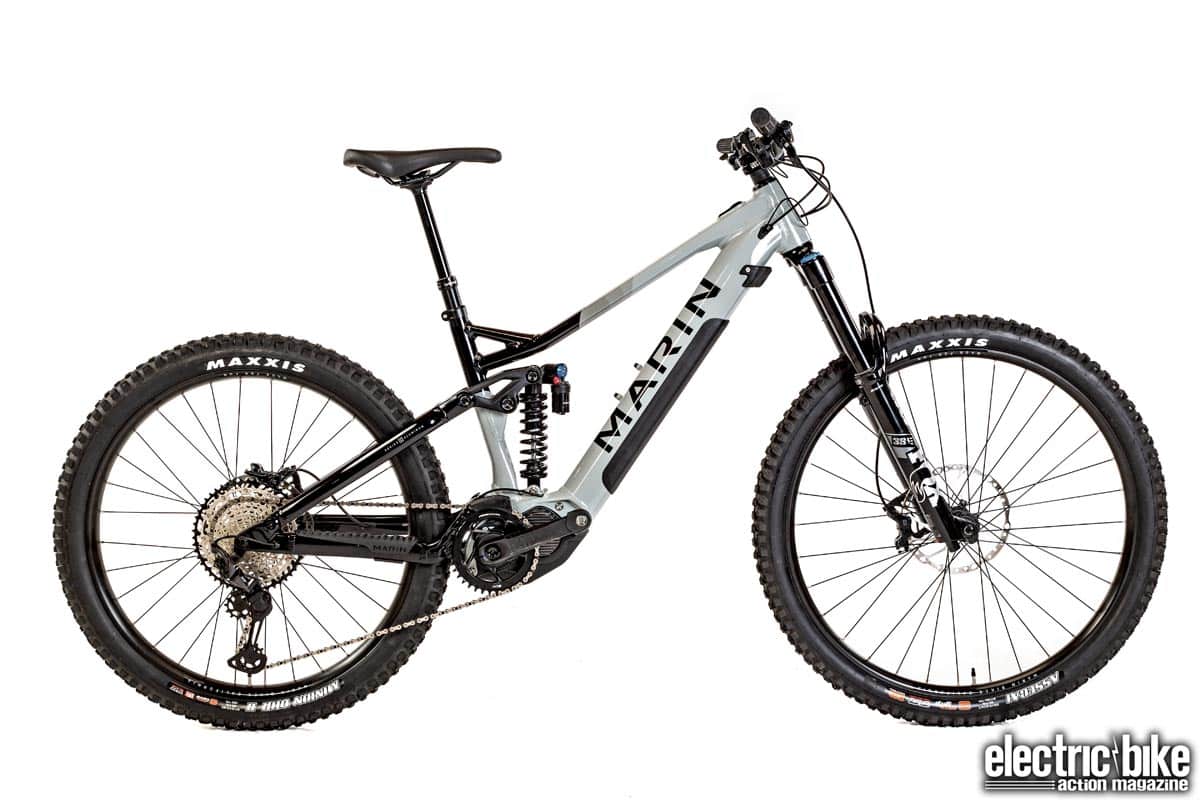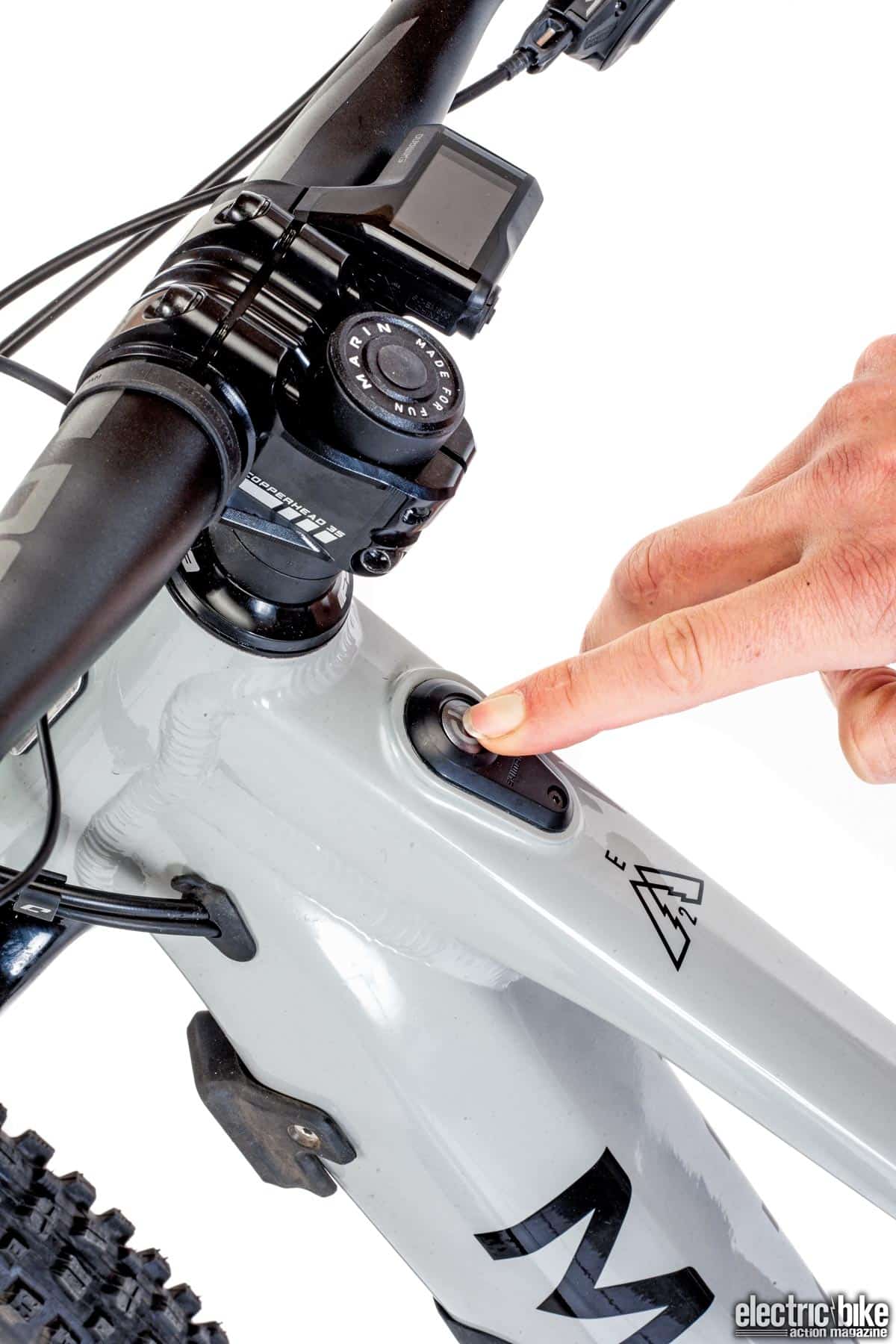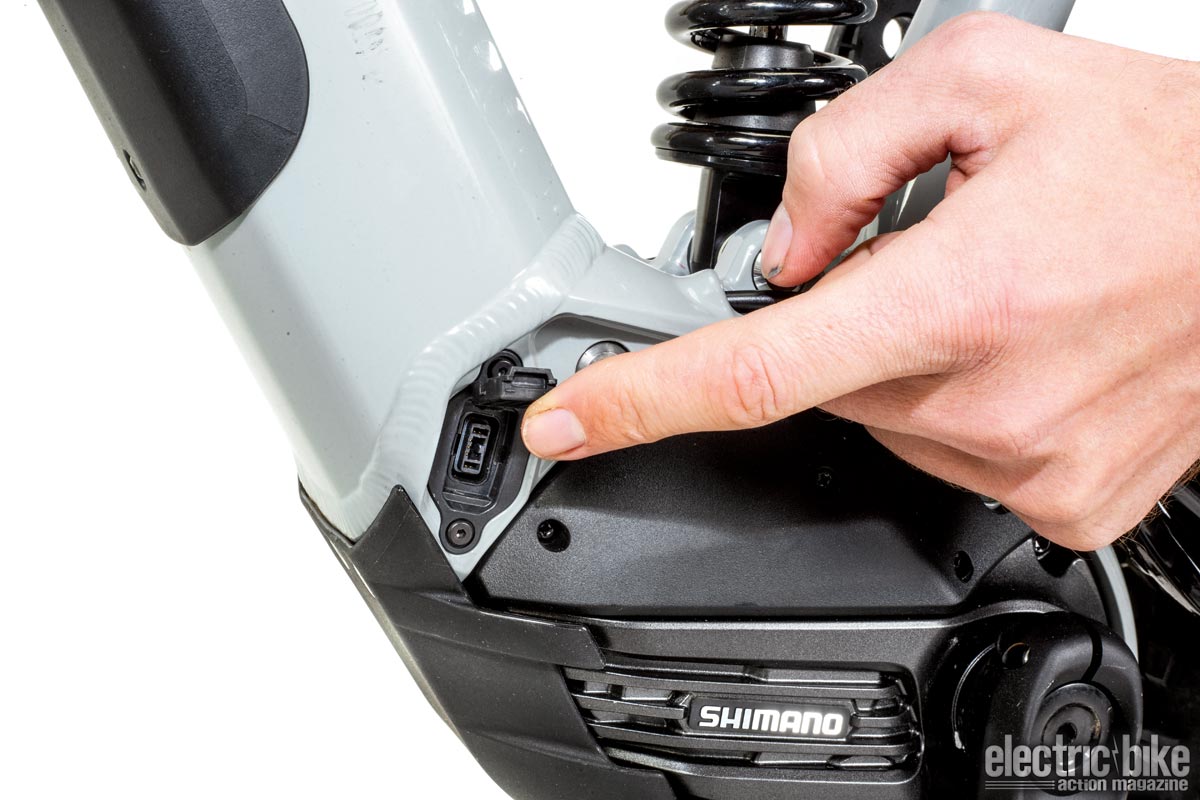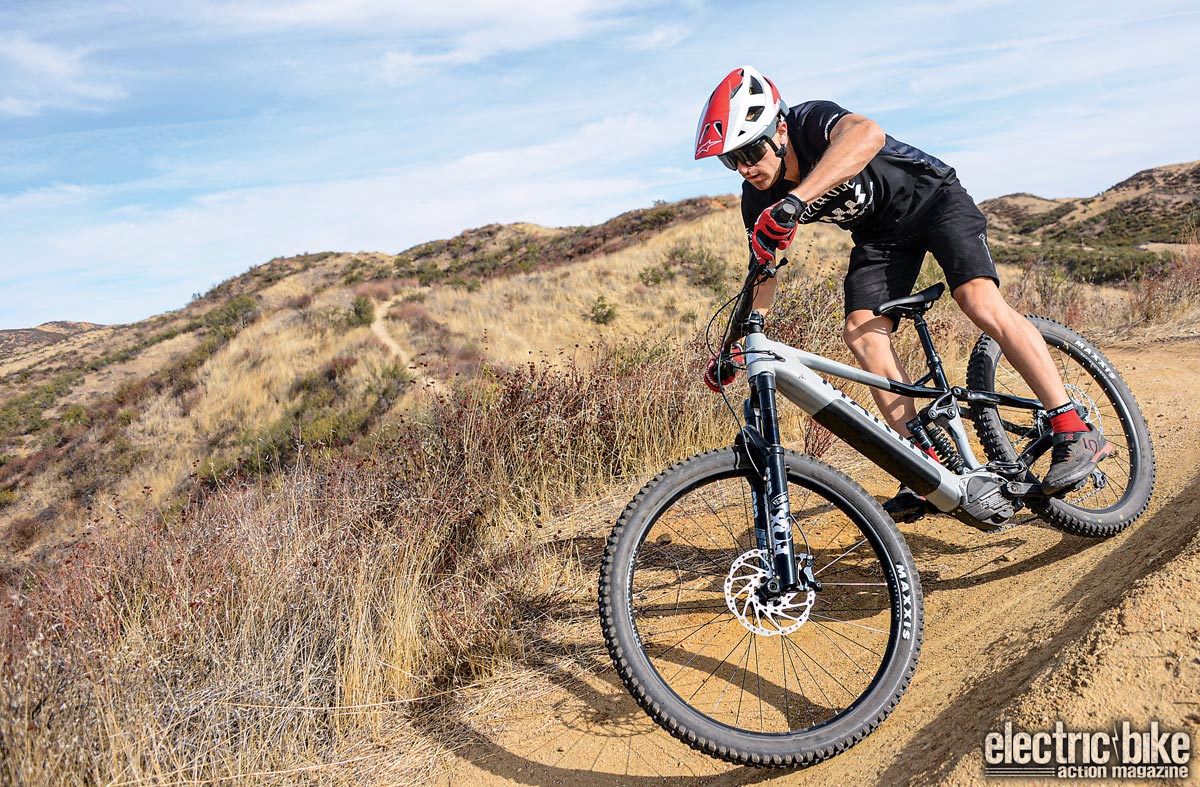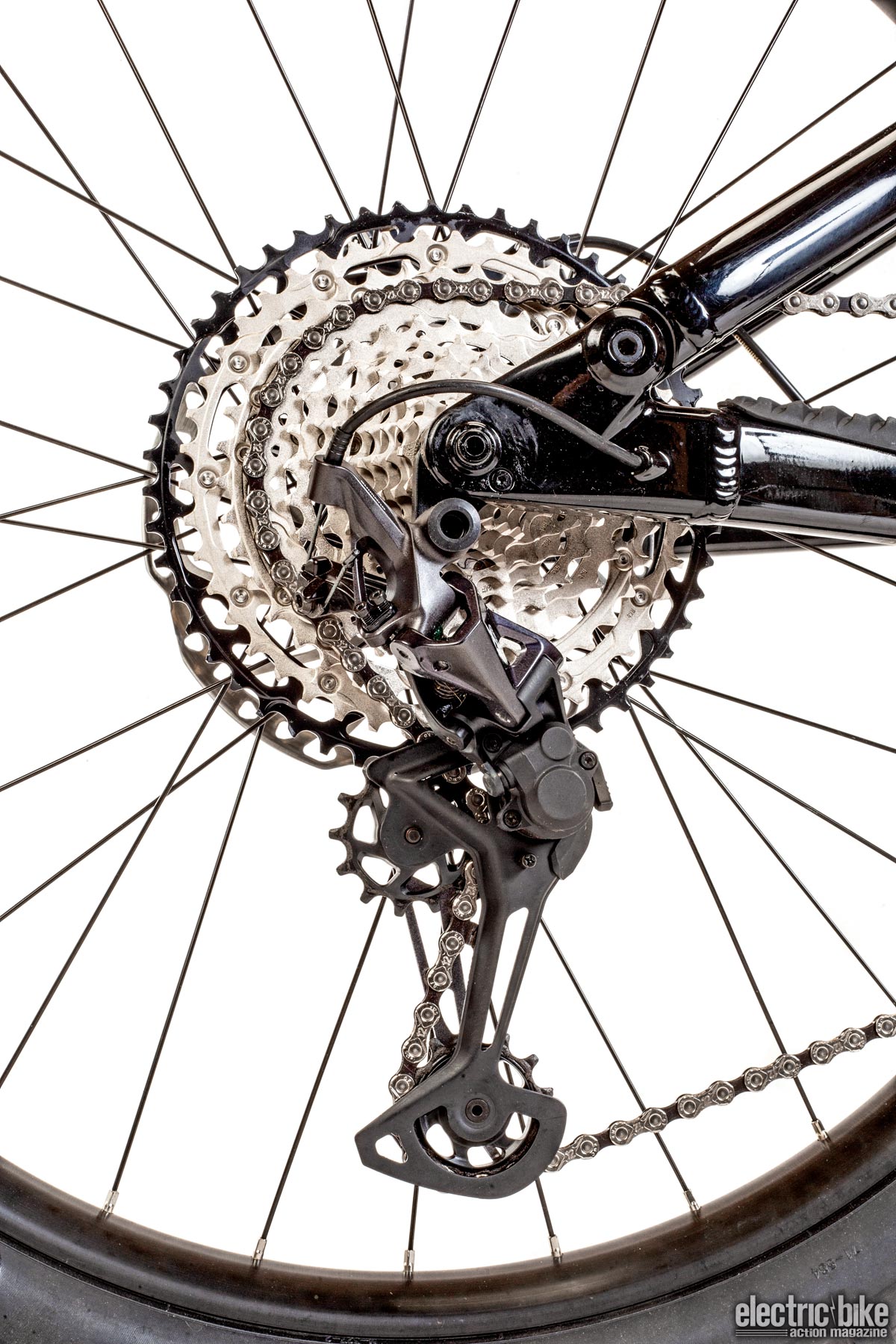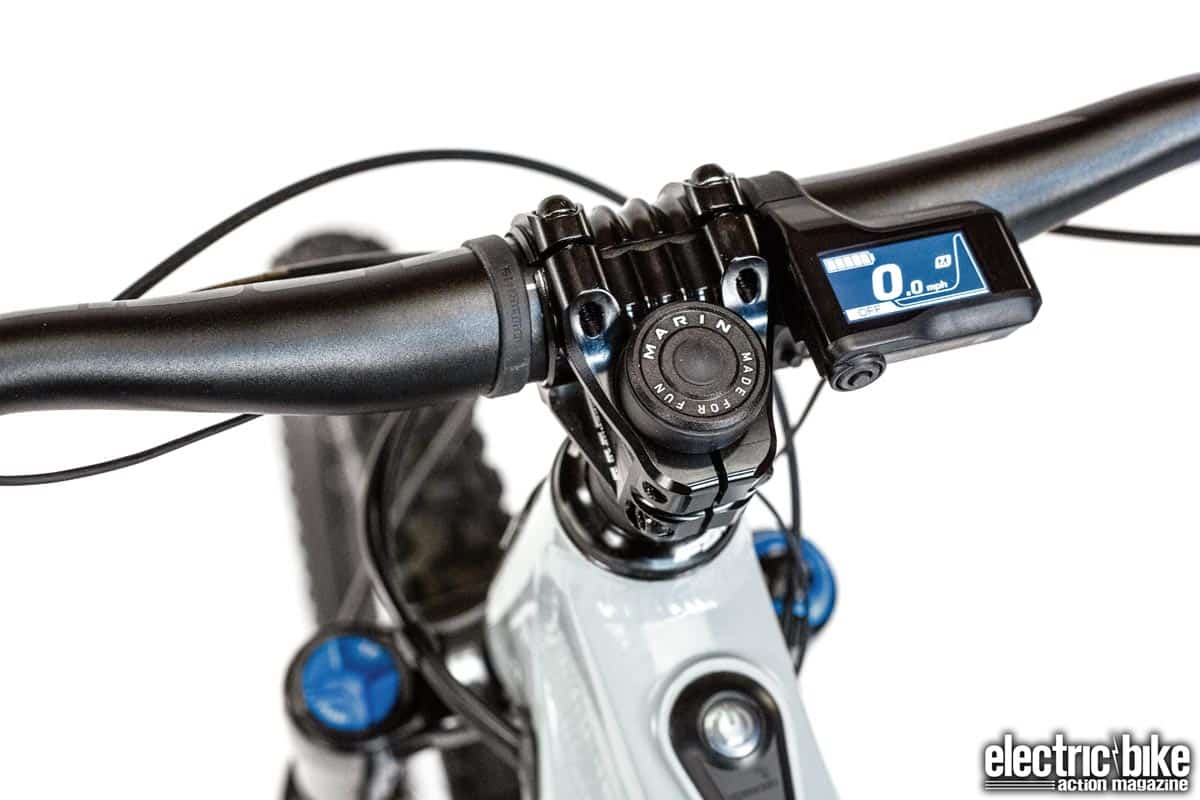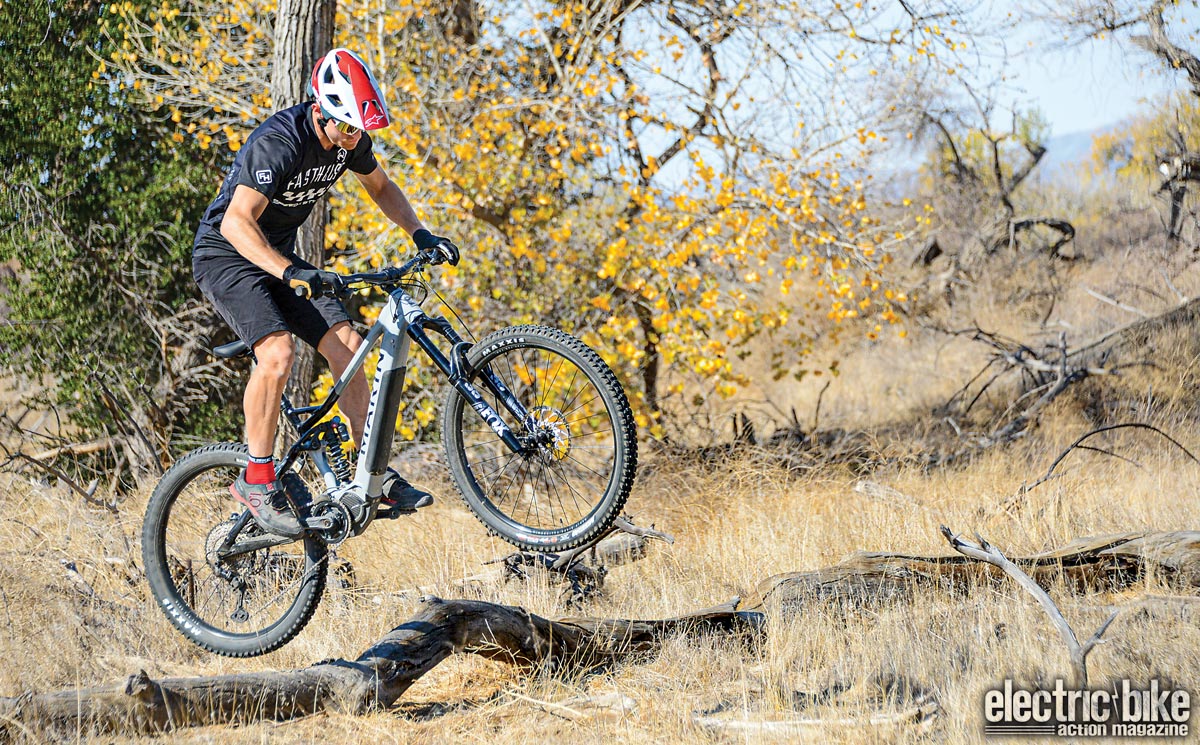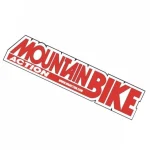Bike Review: Marin Alpine Trail E2 eBike
MARINALPINE TRAIL E2
THE BIKE
The Alpine Trail starts with an aluminum frame that’s available in four sizes and a single gray colorway. Owing to the Fox 38 fork and Fox Float DHX2 shock combo, the bike quietly messages its design intent: “Let’s send it!”
Of course, the big leap forward here for Marin is that not only is this their first venture into full-suspension e-bikes, it’s also their first move to a mixed-wheel combo, with a 29-inch front wheel mated to a smaller 27.5-inch rear wheel.
“The 29er front wheel really helps to be more forgiving through rock gardens, as well as allow more traction and confidence over technical rocky drops.”
Internal cable routing is as expected, and as trivial a feature as it might seem to everyone who has grown old wearing a hydration pack, the frame has a downtube-mounted bottle mount.
THE PARTS
The Alpine Trail plays host to all the familiar product names that leave us feeling confident in our hard-riding pursuits. Shimano parts are found in the 12-speed SLX shifters and Hydro brakes with 203mm rotors, while a XT rear derailleur handles the shifting chores. E*thirteen provides the crank, chainring, chainguide and 10-51 cassette.
The Alpine Trail rolls on Marin’s own double-wall aluminum hoops, with the 29’er front having a 32mm inner width and the rear 27.5 an even wider 38mm internal width to help lay added rubber down. Marin spec’d a 2.5-inch Maxxis Assegai 3C MaxxTerra, EXO+ up front and a 2.8-inch Maxxis Minion DHR II3C Maxx Terra EXO+ in the rear—both tubeless-compatible, of course.
“We found that not once did the drag of the motor seem like an issue at all, even when we rode the bike with the power off.”
The hard parts come courtesy of Deity for the 800mm-wide Ridgeline handlebar and a frame-size-specific X-Fusion dropper post with a Marin in-house-branded saddle.
THE MOTOR
Test riders queued up early to ride the Marin, not only for the newness of the bike itself but also because it was the first test bike that was equipped with the new Shimano EP8 motor. The sole caveat here was that due to a pandemic/logistics-induced production delay, our E2 test bike was actually built on Marin’s lower-line ($4999) Alpine Trail E1 chassis that differs only by virtue of a smaller downtube to house the 504-Wh battery as opposed the E2’s spec’d 630-Wh version.
In our preview of the Shimano EP8 motor (December 2020), we highlighted the fact that, thanks to the new magnesium motor cases, the powerplant is 10-percent smaller in size and 300 grams lighter than its E8000 predecessor. Shimano claims a 350-percent level of support in Boost mode (versus 400 percent in the previous motor).
The first thing we noticed was how much quieter the motor is and that the power delivery is both smooth and immediate. While the EP8 is full of useful features, one thing we’d like to see from Shimano is an added power level (or two) to allow more freedom from making adjustments via the app on your smartphone. What they did do with the EP8 that helped especially on steep climbs was increasing the amount of torque in the second power level. This allows you up to 85 N/m of torque in Trail mode if you can put enough leg power in.
One of the issues we noticed which should be standard by now is if you keep spinning faster in one gear you should be able to keep accelerating whether you shift up or not. It’s definitely better than it was, but this is a feature that the other three brands have really figured out.
“The first thing we noticed was the ability to literally plow right through jagged rocky sections.”
To Shimano’s claim that the EP8 motor would have far less drag or decoupling than the previous generation, we found that not once did the drag of the motor seem like an issue at all, even when we rode the bike with the power off.
WHO IT’S MADE FOR
Since everyone continues to clamor for all things “enduro” when it comes to full-suspension mountain bikes, the Marin, too, can play the game of a mid-length travel bike that’s built to take a hard-ride beating. Both front and rear Fox suspension components are taken from the Performance Elite catalog, which is more than burly enough for the majority of recreational riders out there.
THE RIDE
Truth be told, we frequently get test bikes that, although solid in many respects, aren’t necessarily leaps ahead of the rest in the ride department. Lucky for us, the Marin was one of those lucky bikes that was solid in both design and ride quality.
Knowing that the Alpine Trail is dabbling in the enduro/long-travel trail bike segment, we decided to dive head first into the gnarliest downhill trail we know. This particular trail is narrow with tight switchbacks and tons of unpredictable rocky drops. The first thing we noticed was the ability to literally plow right through jagged rocky sections. The big front wheel really helps carry momentum through rock gardens, as well as allow more traction and confidence over technical rocky drops.
The Marin’s geometry was obviously designed around the mixed wheelset with great care. We’ve often ridden mixed wheels that have an uneven balance point in the front end that requires a lot of manhandling to maintain control. In contrast, the Marin’s balanced feel was enough to almost
ride itself.
With seemingly endless switchbacks on this particular trail, we had plenty of opportunities to appreciate and realize how exceptional the Marin cornered. The front end didn’t push or lose traction towards the apex of the corners, and the smaller-diameter rear wheel helped the bike change course quickly. In fact, so inspired, we kept trying to find the bike’s limits, and there were actually moments when we thought we might be asking too much before the bike kindly forgave us.
We can’t forget to mention the new Fox 38 forks with the Grip2 damper and Fox coil shock, which, despite being second-tier Performance Elite level in the Fox family, still provided cream-of-the-crop performance and an incredibly forgiving ride.
Another trail we hit was a slippery ridge trail that has many steep downhills with off-cambered corners. To get to this trail requires climbing up technical rain-rutted switchbacks that the Alpine Trail had no problem with. One thing we noticed on the off-cambered corners was the amount of traction the Maxxis tires provided. The front end continued its trend of staying planted through the corners. A big factor in the cornering department is a low stand-over height (686.8mm) and the shorter seat tube, which allowed us to get a lower body position through corners.
THE VERDICT
There are a couple of things to consider with this bike. The build quality is a top-notch, hand-welded frame with nice and neat features all around. The well-designed geometry with the mixed wheelset is a major standout to us.
While the new Shimano motor isn’t leaps and bounds ahead of the competition, it’s nonetheless a competitive and an impressive motor. The new and bigger (and correct-spec) 630-Wh battery is really a sweet spot and should do well to help alleviate range anxiety. If you’re looking for a quality build with solid design features, plus some of the best handling available, the Alpine Trail E2 is a contender.
MARIN ALPINE TRAIL E2
Price: $5999
Weight: 56 lbs
Motor: Shimano STEPS EP8
Battery: Shimano 630 Wh (504 Wh tested)
Top speed: 20 mph
Range: 20–50 miles
Drive: Shimano SLX shifter/Shimano 1×12 Deore XT derailleur
Brakes: Shimano SLX with
203mm rotors
Controller: Shimano SC-EM800
Fork: Fox 38 Performance Elite w/ Grip2
Shock: Fox Float DXP
Frame: Aluminum
Tires: Maxxis Assegai 29×2.5” 3C/Maxxis Minion DHR II 27.5×2.8” tubeless-ready
Color: Grey
Sizes: S, M, L, XL
www.marinbikes.com
SUBSCRIBE & RENEW HERE
Mountain Bike Action is a monthly magazine devoted to all things mountain biking (yes, that’s 12 times a year because we never take a month off of mountain biking). It has been around since 1986 and we’re still having fun.

